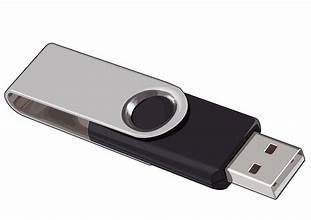2000s
FLASH DISK

The 2000s marked a **rapid evolution in storage technology**, with increasing capacities, faster speeds, and more portable solutions. **Hard disk drives (HDDs) continued to dominate**, with storage capacities growing from **tens of gigabytes to several terabytes** by the end of the decade. SATA (Serial ATA) replaced older IDE interfaces, improving data transfer speeds and reliability. At the same time, **Solid-State Drives (SSDs) emerged as a revolutionary storage alternative**, offering significantly faster performance due to the absence of moving parts. Though expensive in the early 2000s, SSD prices gradually decreased, making them more accessible for high-performance computing.
**Optical storage also advanced**, with **DVDs becoming the standard** for movies, software distribution, and data storage, offering **4.7 GB (single-layer) or 8.5 GB (dual-layer) per disc**. By the mid-2000s, **Blu-ray Discs** were introduced, boasting capacities of **25 GB (single-layer) and 50 GB (dual-layer)**, making them ideal for high-definition movies and large data backups. However, as the decade progressed, **USB flash drives and external hard drives** became more popular due to their convenience and increasing capacities, gradually replacing CDs and DVDs for file storage and transfer.
One of the biggest shifts in the 2000s was **the rise of cloud storage**, with companies like **Google, Dropbox, and Amazon** introducing **online storage solutions**. This allowed users to **store, access, and share files remotely** without relying on physical storage devices. Meanwhile, **flash memory became mainstream**, with SD cards and USB drives reaching **multiple gigabytes in capacity**, making them essential for cameras, smartphones, and portable storage. By the end of the decade, storage technology had become **cheaper, faster, and more flexible**, setting the stage for the dominance of SSDs, cloud storage, and high-capacity external drives in the 2010s.